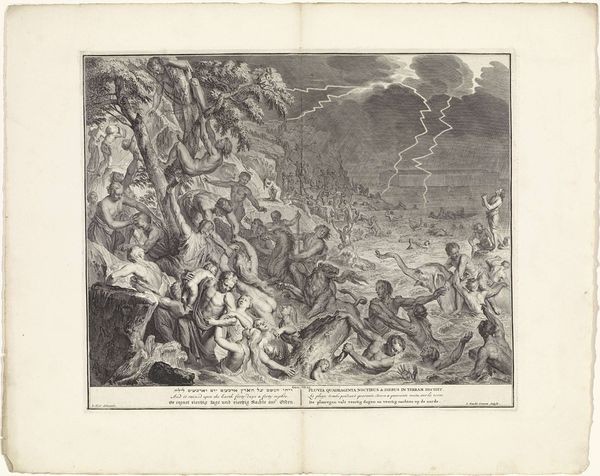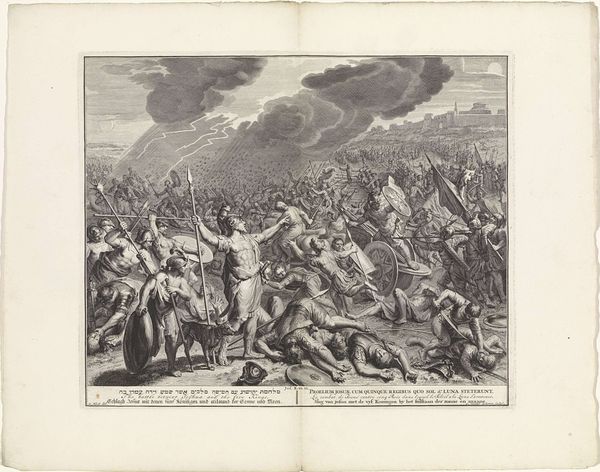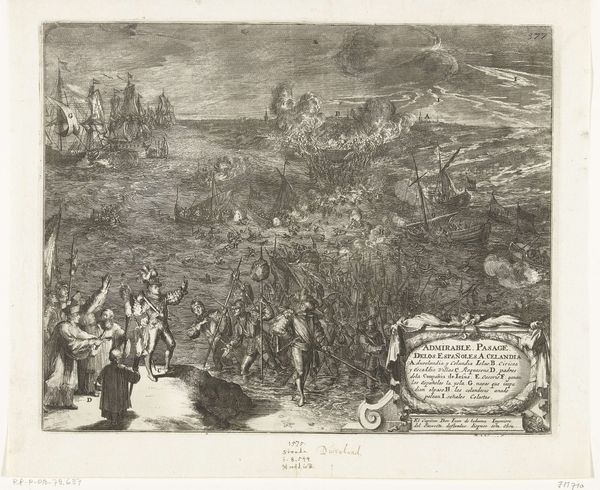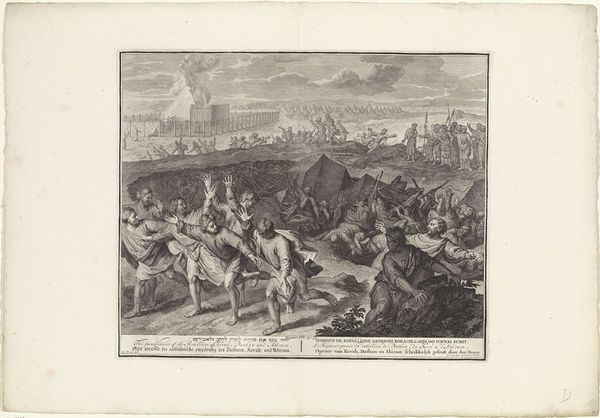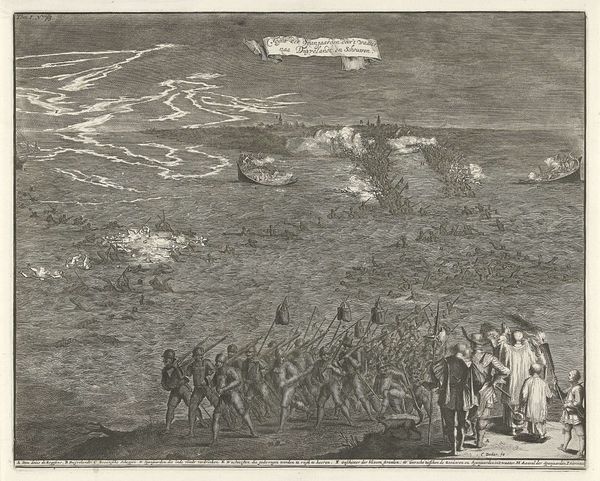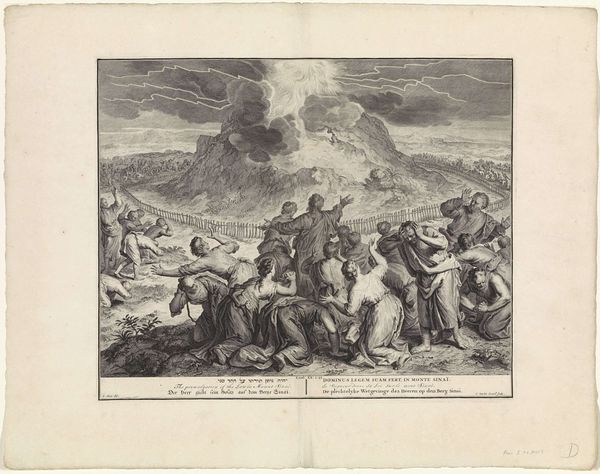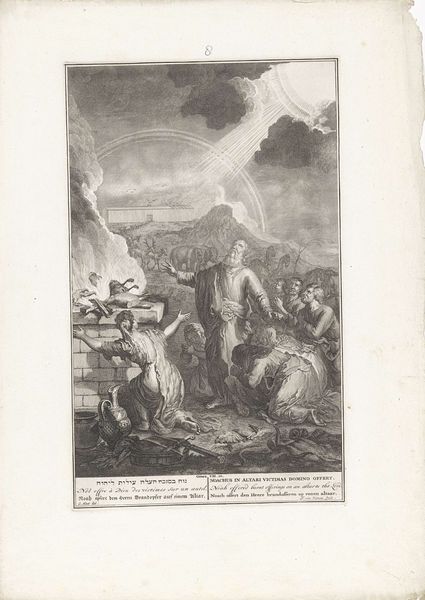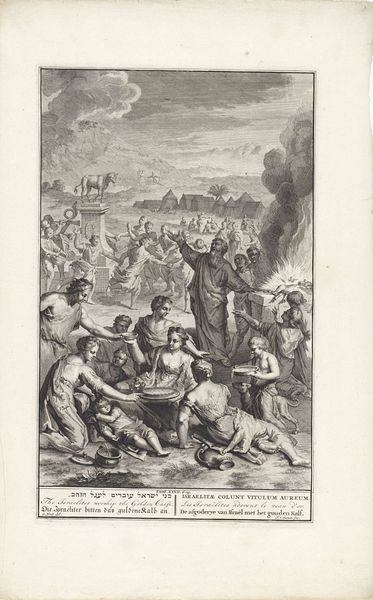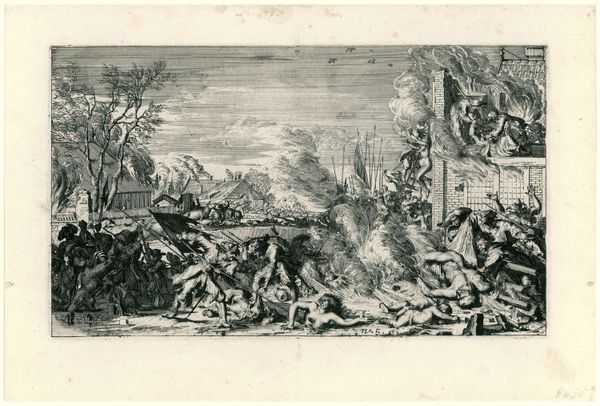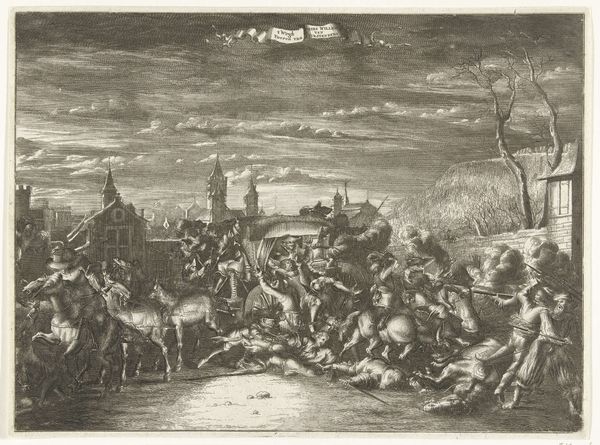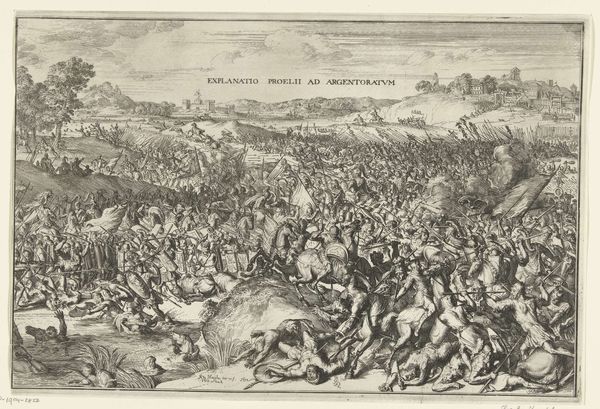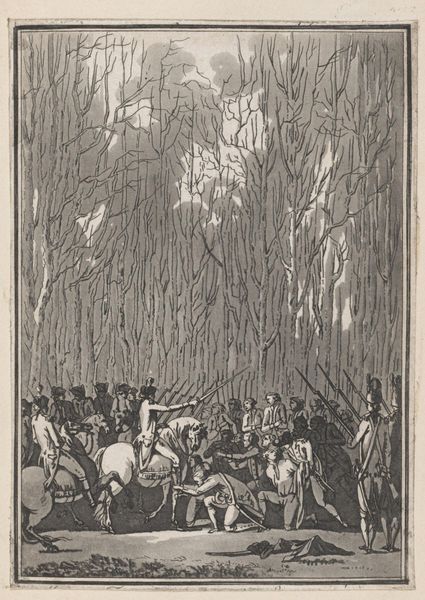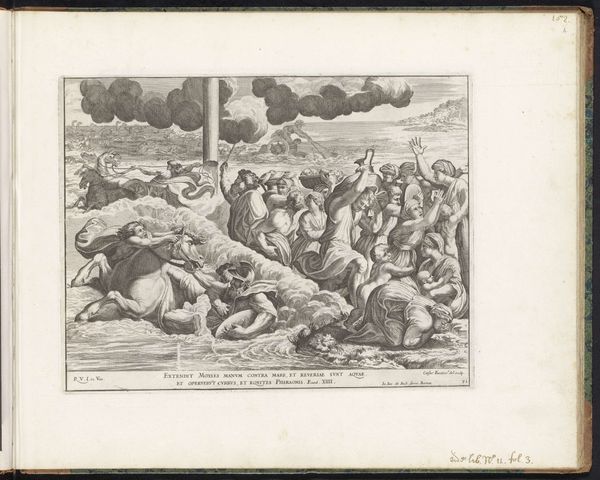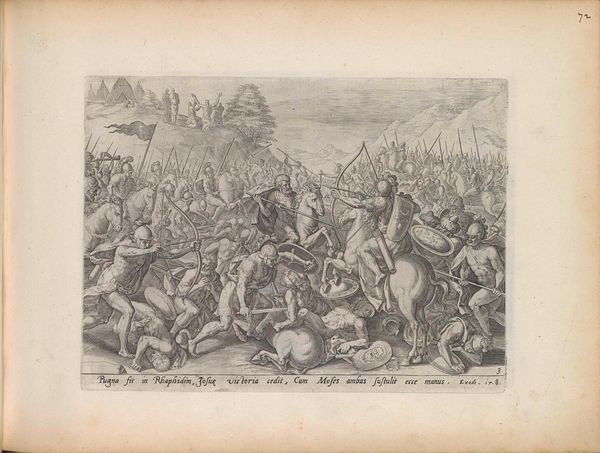
print, engraving
#
narrative-art
#
baroque
# print
#
old engraving style
#
history-painting
#
engraving
Dimensions: width 432 mm, height 358 mm
Copyright: Rijks Museum: Open Domain
Curator: I'm struck by the chaos—it's a tumultuous scene. You've got throngs of people, lit by what seem to be torches. There's an intensity in the movement, almost feverish. Editor: Yes, this is "Strijd tegen de Midjanieten," or "Battle against the Midianites," an engraving made in 1728. It resides here at the Rijksmuseum and it was made by Gilliam van der Gouwen. Curator: As an engraving, the process is intriguing. Think of the labor, the precision. It's about pushing metal, consuming the tool and the artist's labor, in service to an audience with money to spend. You wouldn't hang this in just anyone's home. Editor: That's right. Prints such as these allowed biblical narratives and historical scenes to be disseminated widely. It offered visual culture, defining religious identities and projecting a version of events in support of socio-political climates of the time. The printing press transformed image economies and gave power to particular producers of media. Curator: Absolutely. And consider the subject—a battle, ripe for symbolic projection. It really lends itself to being manipulated as propaganda depending on who controlled its reproduction. What narrative does its widespread existence promote? The print as a multiple is inherently tied to mass messaging, but what's the goal of the messenger? Editor: One has to see these images circulating within specific contexts. We often find that prints become didactic. Here the distribution may very well be designed to evoke strong moral and religious messages, legitimizing authority or stirring patriotic sentiments. But the power dynamics can easily shift too; prints are a powerful form of social commentary and political critique that we see used during and after times of conflict. Curator: Yes, looking at the scale of the figures in comparison with that landscape I can really get a sense of being engulfed in a monumental moment. Its a visually arresting spectacle—it compels us to consume what happened! Editor: Understanding such prints, therefore, isn't just about art. We are examining a moment of media distribution with serious socio-political motivations at stake, all brought to life by this incredible use of materiality and mark-making.
Comments
No comments
Be the first to comment and join the conversation on the ultimate creative platform.
